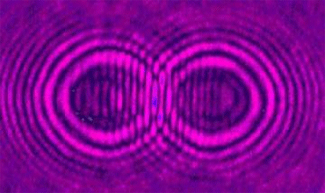To meet superfluids

Superfluidity, as well as superconductivity, are macroscopic quantum phenomena arising from collective quantum effects. The main features of superfluidity are the ability of superfluids to flow without resistance along thins capillaries and to allow the flow of heat with very low resistance, and of sustaining propagating temperature waves. However, when the velocity of the flow exceeds some critical velocity, a resistance to the motion suddenly appears. This resistance was identified as being due to the formation of a tangle of quantized vortex lines in the fluid which provoke an internal friction, a phenomenon known as quantum turbulence. Quantized vorticity, given by the ratio of the Planck constant to the mass of the corresponding atom (usually 4He), appears also when the superfluids or Bose-Einstein condensates are submitted to rotation. In a series of papers from 2002, David Jou, of the Physics Department of the Autonomous University of Barcelona, and Maria Stella Mongiovì, of the Department of Mathematics of the Palermo University, have studied several dynamical and thermodynamical aspects of quantum turbulence. One of their contributions has been to generalize the equations describing the evolution of the vortex line density by including wall effects and rotation effects, besides the effects of the longitudinal flow. This has allowed them to study the combined effects of rotation and flow on the tangle, which are rather complex since the rotation tends to orient the vortex lines along the rotation axis, whereas the flow tends to randomize such orientations. In a recent paper, they have proposed a hydrodynamic description of inhomogeneous vortex tangles which improves the analysis of the interaction between second sound (temperature waves) and the vortex tangle by taking into account the flexibility of vortex lines and the compression and rarefaction of the length of vortex lines per unit volume. The practical usefulness of such analysis is that it allows to improve the experimental observations about the density and the structure of vortex tangles by means of the interaction of the latter with second sound.
References
M. S. Mongiovì and D. Jou "Thermodynamical derivation of a hydrodynamical model of inhomogeneous superfluid turbulence - art. no. 024507"


